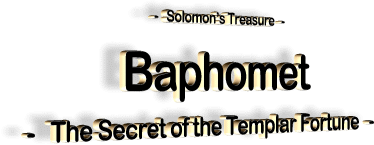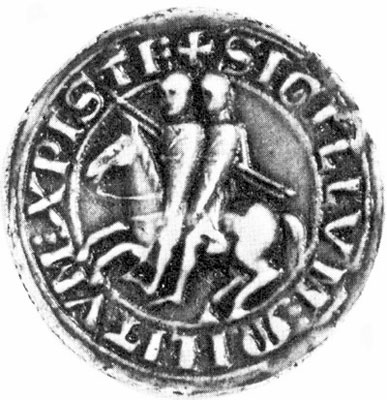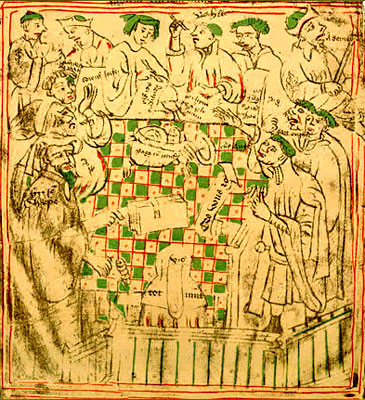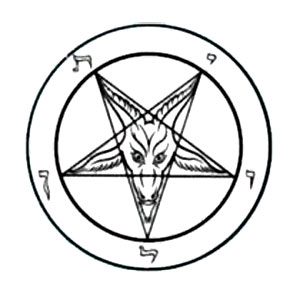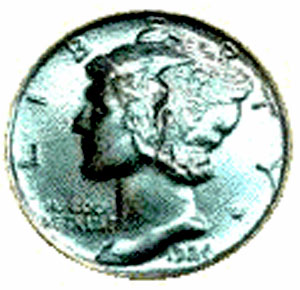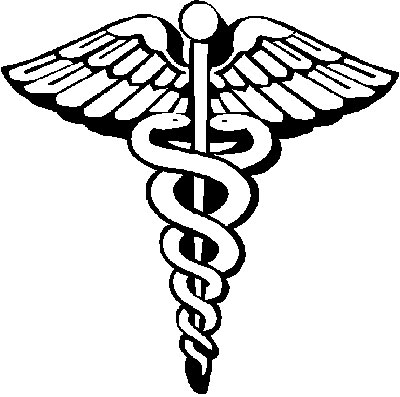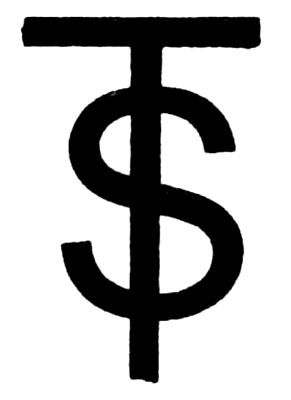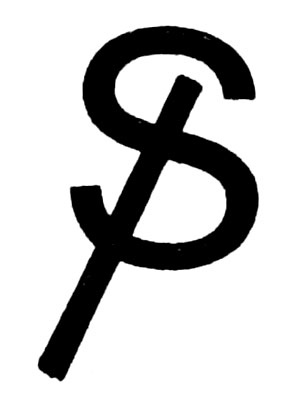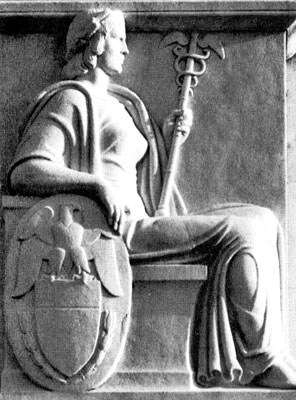|
2007 recovered through WayBackMachine Website
In it I explored the Masonic and occult symbolism of the U.S. one dollar bill. I explained how these symbols acted as psychopomps directing the mind of its holder to believe in the power and value of the U.S. dollar. I argued that, due to the nature of our fiat (paper) currency, and the practice of fractional reserve lending upon which our banking system is based, it is the faith of the American public, and that faith alone, which gives the dollar its value.
And this, I explained, is the essence of magic, akin to the alchemical concepts of turning dross into gold.
Furthermore, the way in which our economy causes
capital to multiply exponentially is similar to the alchemical idea of
creating very much from very little. Such concepts regarding money can be
found in the teachings of Freemasonry, as I reveal in my latest book,
Solomon’s Treasure: The Magic and Mystery of America’s Money.
They were part of a tradition passed down from the cultures of antiquity, particularly Greece and Judea. Indeed, as I explain in my book, the secret wisdom of how to create and multiply wealth was known to Solomon, and may have been at the heart of his fabled treasure, purportedly discovered beneath the Temple Mount by Freemasonry’s historic predecessors, the Knights Templar.
And as it turns out, our modern system of
banking owes even more to the Templars than it does to the Freemasons.
Seal of the Knights Templar. The Knights Templar were a Catholic military order created towards the beginning of the twelfth century, and towards the end of Europe’s “Dark Ages.” This was a slow, depressing 1000-year from the ruins of the fallen Roman Empire to the rise of Catholic Europe’s Holy Roman Empire.
It was a miserable time because, after the
collapse of the Roman economy, the use of coinage on the Continent virtually
ceased (the center of world trade having shifted to the Byzantine Empire)
and a feudalist economy developed.
A contemporary illustration of the execution of
the Knights Templar Grand
Master Jacques de Molay in 1314. With no real money in circulation, Feudalism became the new economic system.
From 476 until the emergence of the “Renaissance” (put by some historians at about 1350 B.C.), peasants worked on large manors owned by nobles, where every effort was made to keep the manor self-sufficient.
On the manor, they produced their own food,
clothes, and tools, and paid their taxes in these goods. Everyone lived and
died on the same manor, just as their father had done before them. Trade
continued in the Byzantine East, but in the West, it was dead.
But when Jews were expelled from many
communities, of and on, during the pogroms of the Middle Ages (sparked
periodically, when people began to realize how much money they owed to the
Jews), these communities lost their money-lenders.
The Templars, or as they were officially titled, the "Poor Knights of the Temple of Solomon”, were, like many other knightly orders which formed during the Crusades, at the forefront of the European struggle to capture and control the Holy Land.
But in addition to fighting, they were also in charge of fulfilling many practical roles for the community - among them, money-lending. The Church allowed the Templars to charge interest on loans at an even higher rate than Jews had been allowed to.
In fact, they were granted a charter that basically established the Templars as a law unto themselves, accountable to no one but the Pope.
Thus they were able to operate autonomously at their
various bases throughout Europe. They even had the right to establish their
own sovereign country, which is essentially what they were doing in the Holy
Land when they helped to create the Latin Kingdom of Jerusalem.
This last part was most interesting, for it amounted to the ultimate entrance fee:
Considering that their knights were taken from
the cream of European aristocracy, the younger brothers of wealthy and
powerful heirs, this was quite significant. It allowed them to amass a large
amount of wealth and land in a relatively quick amount of time.
They farmed, manufactured textiles, built roads and hospitals, and engaged in all sorts of trade. They were responsible for numerous technological advances during this time, either through their own invention, or through techniques that they learned through their frequent contact with Arabs, Jews and Byzantines.
Their business ventures had the effect of largely transforming Europe’s economy, paving the way for the mercantilism that was emerge soon in post-Medici Italy, later giving birth to Capitalism in Europe and America.
The Templars’ most significant contribution on this
front was in the field of banking, which became their most lucrative
industry.
From there they would make their way to Jerusalem along a pre-selected route consisting of a series of churches and cathedrals, which were themselves associated with nearby Templar preceptories, each featuring banking services.
There the pilgrim would present the banker with a “chit”:
The pilgrim could then withdraw from the bank at his current location the amount of money he need to pay for his stay at that particular stop on the route, or to make donations to the local churches, and could leave the rest in his “account.”
He could also make direct charges to the account
for any goods or services which the Templars themselves were able to offer
the pilgrim, as was often the case.
The Templars had originally picked up the use of the chequer pattern from their contact with the East, from whence they also learned to play chess, and it is theorized by some authors that it was Templars who originally combined the chessboard (which was not at first chequered) with the chequerboard pattern, enhancing the deep symbolism that the game of chess already possessed.
The use of the chequerboard as an abacus became widespread as mercantilism progressed, and thus the term “exchequer” came to mean “a treasury, as of a state or nation.”
The term “check” may be related to “jetton”, which is the name of the round coins that were often used as tally chips on exchequer boards, representing various denominations of money.
They were introduced by the Templars in France
in the mid-thirteenth century.
An illustration of the Exchequor of Ireland at work shows the use of a chequerboard as an abacus
in the thirteenth and
fourteenth centuries. As the Templars expanded their banking empire, and as they came to control many other staple industries throughout Europe, they quickly became the continent’s most dominant economic influence.
Never before has a single institution used money alone to amass so much worldly power. This power threatened not only the monarchs of Europe (most of whom were now financially indebted to the Templars), but even Pope Clement V, who was no longer was able to hold the Templars under the thrall of his signet ring.
Soon the Templars would become a force that no one could stop, and they seemed to hold allegiance to no one else either - no earthly power, at least.
Their enemies hypothesized that for the Templars
to have become so wealthy and powerful in such a short span of time, they
would have had to have made a pact with the Devil. With a little
investigation, it was discovered that in fact they had.
The symbol of the skull and crossbones, apparently invented by the Knights Templar, was used everywhere throughout their possessions.
Carvings depicting a grotesque goat-headed creature, with a semi-human body at once both male and female, were also found in the Templars’ ritual chambers.
In confessions painfully extracted, many knights
admitted that the skulls, the heads and the hybrid creature all represented
their secret god, “Baphomet”, whom they worshipped because it “caused the
land to germinate”, and also “made them rich.”
Eliphas Levi’s depiction of
Baphomet. Modern occultists, for whom Baphomet is now a potent symbol, see in this idol a representative of the “Universal Principle”, the “Azoth” or “Fifth Element” which to alchemists is the key to turning lead into gold.
This is probably what it meant to the Templars too.
But to their interrogators, the tortured knights were confessing Devil worship, and they were punished accordingly. The Order was disbanded, the Grand Master burnt at the stake, and the offending knights sent to do penance at various monasteries.
The power of the Templars was crushed.
“The Goat of Mendes”
symbol used by the Church of
Satan. Let us return now to the concept of the “Baphomet”, the idol which the Templars said,
These claims, coupled with the fact that the idol was often depicted as a goat with male and female sexual organs, might cause one to think that the Templars had somehow stumbled upon and absorbed the tenets of the cult of the she-goat Amalthea.
This is the creature who purportedly nursed Zeus while he was a babe in exile on the island of Crete, hiding from his father Kronos, who wished to kill him.
Having little thanks for the favors of Amalthea, Zeus had her slaughtered as soon as he was fully grown, and fashioned from her skin an impenetrable shield called the “Aegis.” The word “aegis” or “aigis” literally means “goat-skin.”
Out of one of her horns, he created the “cornucopia” or “horn of plenty”:
So Amalthea was venerated by some cults in much the same way that the vegetation deity known as the “Green Man” was in Celtic culture:
Similarly, Baphomet was so literally associated with money by the Templars that they kept small statuettes of him in their money coffers.
But the Baphomet is reported to have done more for the Templars besides just make them rich. He is also said to have made them “wise.” In fact, it has been shown that Baphomet’s name literally means “wisdom” in Aramaic, if run through the ancient Atbash cipher that was often used by the Templars.
The result is “Sophia”, which was the name used
for the goddess of wisdom, who was often revered in Gnostic cults in New
Testament times. It was believed in these cults that one could unite
spiritually with Sophia by performing certain rites and meditations, and
thus one could obtain “gnosis”, or divine knowledge.
Johannite cults even exist today in the form of semi-Islamic Gnostic sects found in Iraq. It has been charged that that Templars followed this doctrine, and indeed, he was their patron saint, as he is now for Freemasonry.
More importantly, perhaps, he is known to have been beheaded at the Temple Mount in Jerusalem, and his head, or skull, has become a central Christian icon. This brings into focus the claim of occultist Aleister Crowley that the name “Baphomet”, by itself, without running it through any ciphers, means “Baptist of Wisdom.”
This could easily have been a title for the
prophet John.
A Masonic device shows the two Saints John: the Baptist on the left, and the Evangelist on the right.
The Baptist strikes the
Baphometic “As above, so below” pose. So can John’s head be the skull that the Templars are said to have not only worshipped, but talked to?
Specifically it is said to have “prophesied” for them. The use of a severed head or skull for divination was a common practice throughout the ancient East and even, though secretly, in Judah and Israel during Old Testament times. Such devices were called “teraphim”, and their use was recorded in the Bible.
It seems possible that the Templars could have
made similar use of John the Baptist’s head or skull.
It was the fact that they were formed there, at
the site of what was once the great Jewish temple, which gave the Order its
name, “the Poor Knights of Christ of the Temple of Solomon.”
Obviously they believed that Baphomet could talk to them, and that Baphomet possessed “divine wisdom.”
So right off the bat, with that belief as our basis, it is possible to contend that Baphomet taught the Templars all forms of knowledge, including the mysteries of money and wealth. It is evident that the Templars did come into possession of great sources of wisdom, which enabled them to be involved in breakthrough accomplishments of art, science and medicine during their time.
And the ideas they applied to create their
international banking system were sheer genius.
Let us then say that the Templars took control
of this artifact somehow. After coming to possess the Baphomet, the Knights
could have formed a pact with the deity connected to it, they then would
have begun to structure their order into an international system for
advancing learning and science, and for creating wealth. Their wealth and
membership expanded exponentially after they created a formal constitution
for their Order, which could have been an extension of their pact with
Baphomet.
It is said that Philippe’s seneschals searched frantically all throughout the Templar properties in France, seeking their fabled “treasure”, for he knew that the Knights were rich. But he did not really understand that their wealth was created by banking, and was spread throughout their domains, invested in various money-making enterprises.
Only a fraction of it actually existed in
reserve as physical currency.
The more you can convince others of the power of your money, the more power it actually has.
This faith, which gives money its value, is equivalent to the Azoth or “Universal Principle”, the pure spirit force which, in alchemy, makes the transmutation of lead into gold possible. And this Azoth is, as I have explained, the same concept which modern occultists now acquaint with the Baphomet.
So the above-mentioned concept could have
certainly been among the ideas communicated to the Templars from their
divine source.
American dime featuring
the bust of Mercury, or
Hermes. Another idea at the heart of the banking process invented by the Templars is the concept that money can be “seeded” into a business endeavor, or loaned out upon usury, and, through the miracle of the banking process, grow or multiply exponentially.
As I explain in Solomon’s Treasure, these are ideas that appear, allegorically, not only in alchemical manuscripts and in the medieval Grail romances associated with the Knights Templar, but also in the Bible.
The practice of tithing contains this principle at its heart, and
many of the parables of Christ expound upon it.
The figure of Asmodeus, as described in Middle Eastern legends, has a great deal in common with that of Baphomet, and I believe that they represent the same entity. I see no reason why the demon that the Templars may have discovered beneath the ruins of the Temple of Jerusalem could not have been the same demon who built the original Temple that once stood there.
After all, it was Solomon’s Temple that gave the
Templar order its name.
This symbol not only denotes the Tree of Knowledge in the Garden of Eden, but it could also be equated with the serpent-entwined magic wand of Hermes, the caduceus, which is a symbol of the alchemical process of transmutation.
It further resembles yet another well-known symbol of wealth:
It could be a coincidence, or it could be
evidence of the continuance of a tradition, from ancient Tyre, to King
Solomon, to the Knights Templar, and eventually to the Freemasons who were
responsible for the creation of the U.S. dollar.
This form of the caduceus is
used by the medical profession.
could be the origin of the
dollar sign, according to David Ovason.
is very similar to the dollar
sign.
the serpent in the Tree of
Knowledge, another possible origin for the dollar sign.
Another piece of evidence linking the U.S. dollar with the Templar wisdom of wealth which they derived from the Baphomet has to do with the number 13.
The Templars seem to have associated their idol with this number, and it is believed that this is why King Philippe decided to have them arrested on Friday the 13th of October, as a gesture of defiance.
The date thereafter became a cursed day. Long after the demise of the Templars, pirates, many of them Freemasons, sailed in ships bearing the standard of the Jolly Roger.
It featured the skull and crossbones, a symbol
used by the Templars to represent Baphomet, beneath which was written the
number “13.”
The Jolly Roger.
In my previous article, I enumerated the many examples of the gratuitous and deliberate use of this number on the dollar bill.
Most of these should be familiar enough to any armchair conspiracy theorist. But this number is not only on the present one dollar bill. It can be found on the early forty-dollar note , on the first fifty-dollar bill, and on the first pennies issued by the United States.
13 can also be found throughout the very structure of the U.S. monetary system.
For instance, consider the fact that there are exactly six types of coins, and seven denominations of paper money, currently in circulation in the U.S., adding up to a total of thirteen. Then there is the fact that the Treasury Department was created in 1789, exactly thirteen years after the birth of the USA in 1776.
The government even made a point of putting the date 1789 on the Treasury Department Seal in 1966, almost 190 years after the fact.
The Treasury Seal, by the way,
contains thirteen
stars in its chevron.
Copper coin from Vermont, 1785,
featuring the All-Seeing
Eye, 13 stars, and 26 rays.
and the names of the 13
colonies, with the motto “We Are One.” The Federal Reserve has adopted the conspicuous use of the number as well.
The Fed was created in 1913. It consists of one Board of Governors overseeing twelve Federal Reserve Districts, and one central bank controlling twelve district banks, which in turn then control all of the member banks.
Even the digits of the zip code for the Fed’s
headquarters in Washington, D.C., 20551, add up to thirteen.
America and the Federal Reserve Board, by John Gregory, which shows the American national goddess, Columbia, sporting a caduceus,
with the Federal Reserve seal
as her shield. Is this obsession with the number 13 a tribute to Baphomet by our Masonic founding fathers? Could it be evidence that it is the “Universal Principle”, which Baphomet symbolizes, that lies at the heart of our nation’s wealth?
Perhaps this is part of the reason why the United States has become an economic superforce so quickly.
Perhaps the magic symbols on our currency denote
the magic which allows us all to enjoy a relatively prosperous lifestyle in
a nation held aloft by its citizens’ faith in the power of the dollar.
Statue of George Washington by Horatio Greenough, depicting him in a Baphometic “As above, so below” pose.
Note: Read Part 1 "The Alchemical Dollar - The Magic and Mystery of America’s Money - Solomon’s Treasure".
|
